The Carolina mantid (Stagmomantis Carolina) is a fascinating insect that has captured people’s imaginations for generations. With its distinctive appearance, formidable predatory skills, and unique mating behaviors, the Carolina mantid is a beautiful and awe-inspiring creature. The Carolina mantid holds a special place in the hearts of many residents of South Carolina, as it is their official state insect. This prestigious honor speaks to the importance of this remarkable insect. So come along on this journey as we discover all there is to know about the official South Carolina state insect.
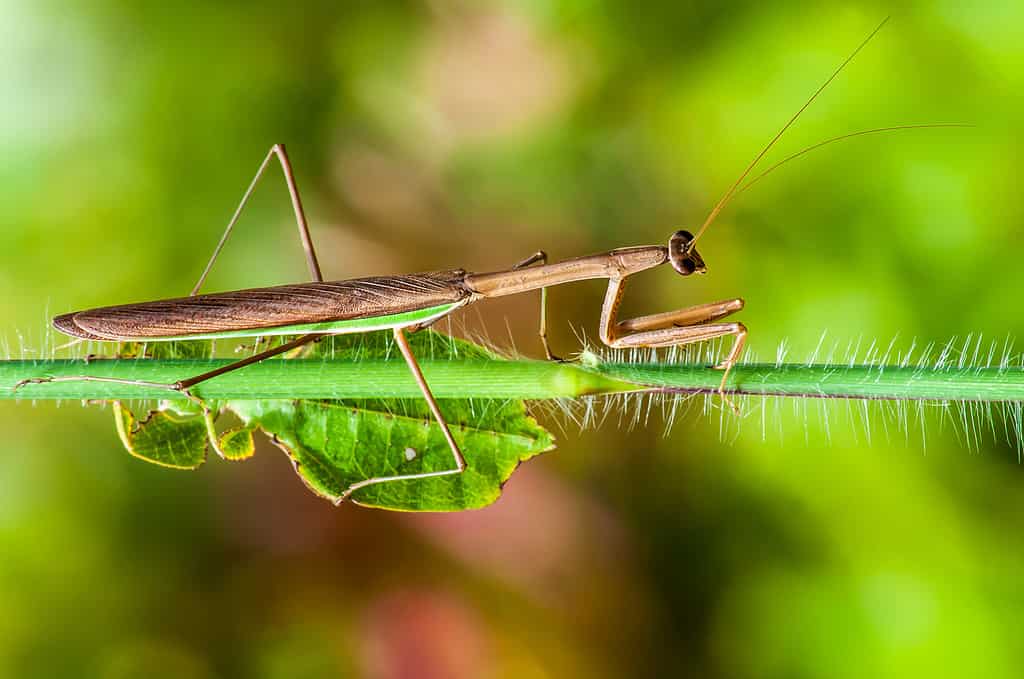
The Carolina mantid holds a special place in the hearts of many residents of South Carolina, as it is their official state insect.
©kamnuan/Shutterstock.com
What is a Carolina Mantid?
The Carolina mantid is a species of praying mantis native to the Southeastern United States. These mantids are generally brown or green in color. They have long, slender bodies with triangular heads. Their large, powerful forelegs are used to catch and hold their prey. Females can grow up to 2.5 inches (6.35 cm) in length. Males are slightly smaller, reaching about two inches (5 cm). They are often found in gardens, fields, and other grassy or wooded areas. They are found where they can easily catch insects, their primary source of food.
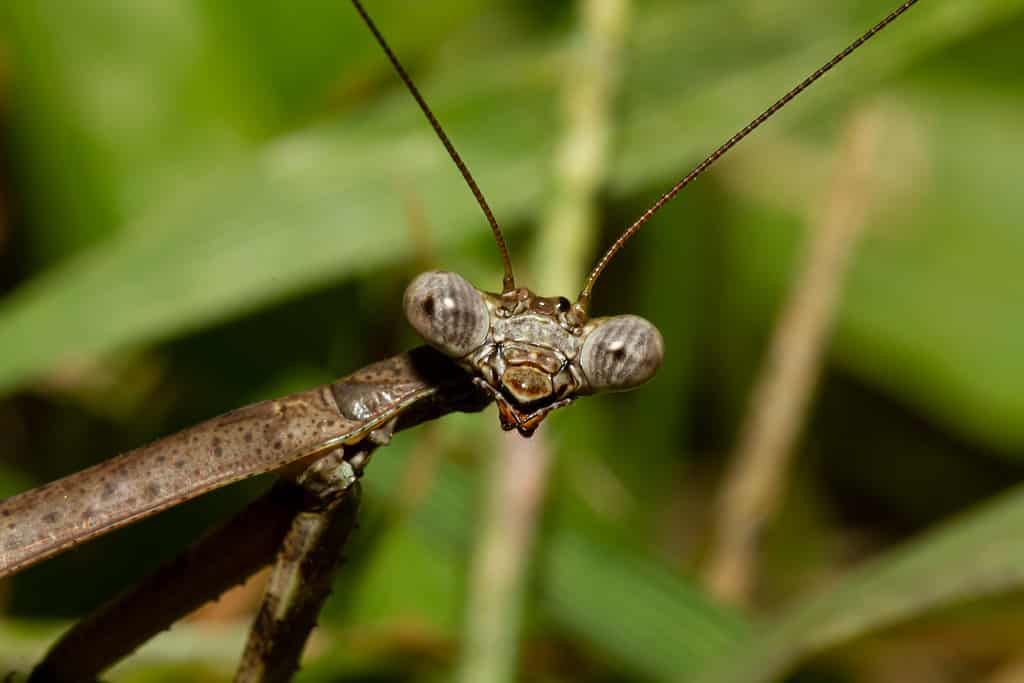
Carolina mantids are generally brown or green in color and have long, slender bodies with triangular heads
©grandbrothers/Shutterstock.com
Carolina mantids are known to be opportunistic predators. They will eat a variety of insects, including other mantids if given the chance. During mating season, males will approach females and perform a courtship display to signal their interest. Whether you’re an insect enthusiast, a nature lover, or simply someone who is curious about the world around you, the Carolina mantid is a species that is sure to captivate your attention and leave you with a newfound appreciation for the wonders of the natural world.

Discover the Official South Carolina State Insect: Diet
The Carolina mantid is a carnivorous insect that feeds on a variety of small arthropods. These include flies, moths, mosquitoes, crickets, grasshoppers, and other insects. They are ambush predators, using their excellent vision and camouflage to wait motionless until potential prey comes within striking distance.
When hunting, the mantid will quickly grab its prey with its strong forelegs. The mantid’s forelegs are equipped with sharp spines for grasping and holding onto its prey. The mantid’s head is highly mobile, allowing it to rotate and position its sharp mandibles for feeding. Carolina mantids are known for their voracious appetite, consuming prey that is several times their size.
Carolina mantids have also been observed feeding on other insects that have already died or are in the process of decomposing. This scavenging behavior allows the mantids to take advantage of available food sources and supplement their diet when live prey is scarce.
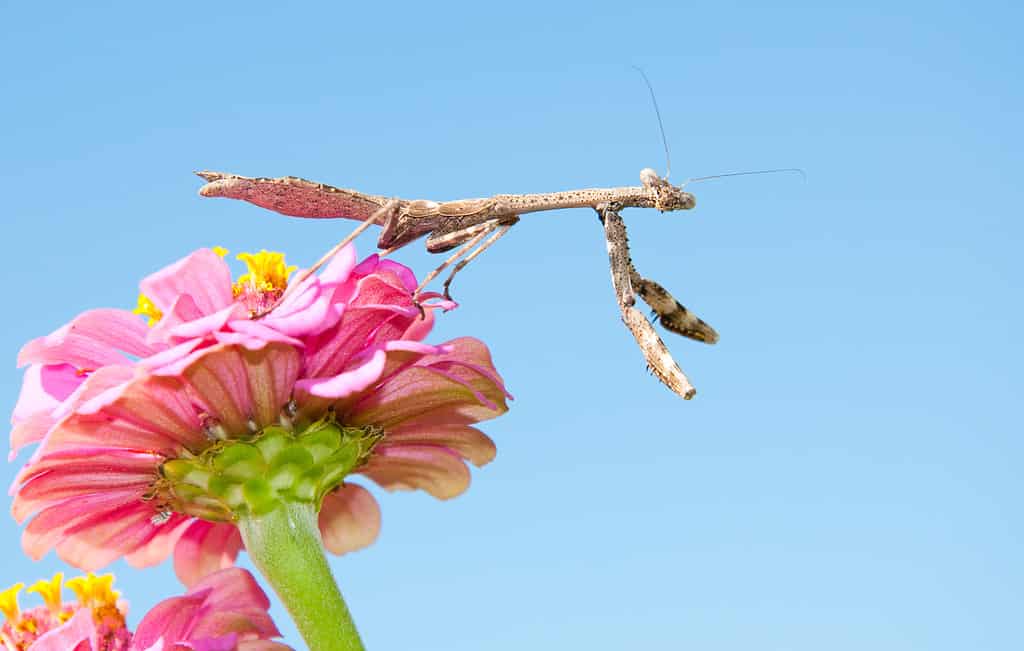
Carolina mantids are ambush predators, using their excellent vision and camouflage to wait motionless until potential prey comes within striking distance.
©Sari ONeal/Shutterstock.com
Discover the Official South Carolina State Insect: Habitat
Carolina mantids are typically found in areas with abundant vegetation, as they rely on this vegetation for cover and as a source of prey. They are often found in areas with tall grasses, shrubs, and trees, as these provide both cover and a hunting ground for the mantids. In urban areas, they can often be found in parks, gardens, and other areas with landscaping and greenery. The specific habitat requirements of Carolina mantids can vary depending on the local climate and geography, as well as the availability of suitable food and shelter. However, these insects are well-adapted to a wide range of habitats and are able to thrive in many different environments.
Discover the Official South Carolina State Insect: Predators
The Carolina mantid is a well-camouflaged insect, and its primary defense against predators is its ability to remain motionless and blend in with its surroundings. However, despite these adaptations, the mantid is still vulnerable to predation by a variety of predators. Birds are quick and agile predators that can spot and capture mantids with their sharp beaks. Mantids may also be preyed upon by larger insects, such as assassin bugs and robber flies.
Parasitic wasps may lay their eggs on or inside the mantid’s body. The developing wasp larvae will consume the mantid from the inside out. Despite these potential predators, the Carolina mantid’s excellent camouflage skills are enough to protect it from most threats. The mantids’ cryptic coloration and ability to remain motionless for extended periods allow them to blend in with their surroundings and avoid detection by most predators.
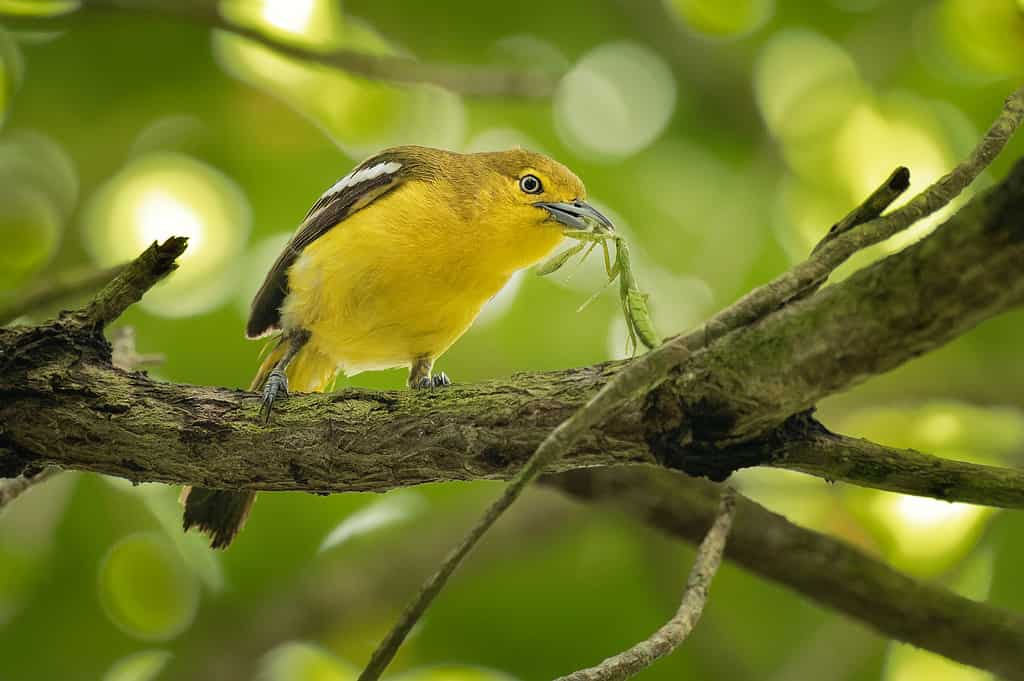
Birds are quick and agile predators that can spot and capture mantids with their sharp beaks.
©Martin Pelanek/Shutterstock.com
Discover the Official South Carolina State Insect: Lifecycle
The Carolina mantid undergoes a simple lifecycle consisting of three main stages: the egg stage, the nymph stage, and the adult stage. The female Carolina mantid lays her eggs in a protective casing called an ootheca, which she attaches to a nearby surface, such as a stem or a leaf of a plant. The ootheca protects the eggs from predators and environmental factors until they hatch in the spring. The number of eggs in an ootheca can range from 50-200. When the eggs hatch, the nymphs emerge from the ootheca and begin their first stage of growth.
Nymphs are smaller versions of the adult mantid and undergo several molts as they grow and develop. During each molt, the nymph sheds its exoskeleton and grows a new one. This process allows it to increase in size and change in appearance. During the nymph stage, mantids do not spin cocoons or build any kind of protective casing around themselves. Instead, they rely on their camouflage and agility to avoid predators and hunt for food. As the nymphs mature, they develop wings and reproductive organs and undergo a final molt to become adult Carolina mantids. Adult Carolina mantids are fully developed and capable of reproducing. They mate during the late summer and fall, and the females lay their eggs in oothecae, completing the life cycle.
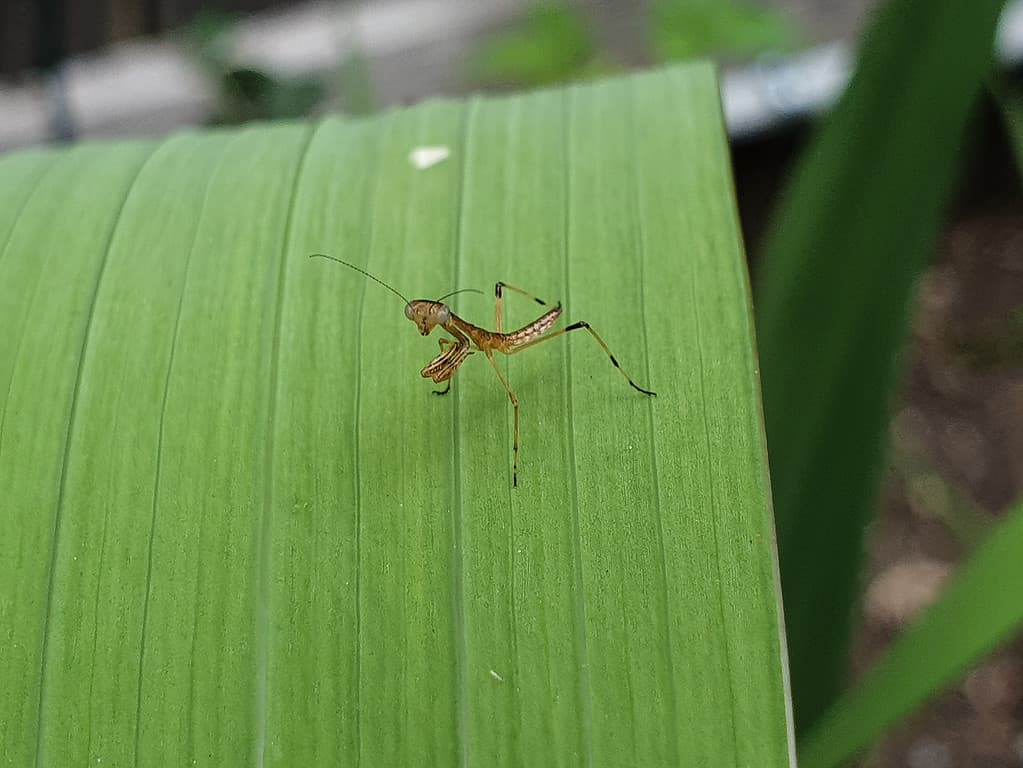
Nymphs are smaller versions of the adult mantid and undergo several molts as they grow and develop.
©Christian Puntorno/Shutterstock.com
Conservation Status
The Carolina mantid is not currently listed as a species of concern on any major conservation lists. As a relatively common and widespread species, it is not considered to be at high risk of extinction or in need of protection.
The photo featured at the top of this post is © kamnuan/Shutterstock.com
Thank you for reading! Have some feedback for us? Contact the AZ Animals editorial team.






